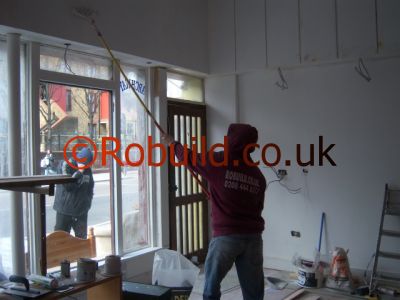Professional Painting and Decorating – Painters and Decorators
Experience has taught many Painters & Decorators experts, the easy way to Painting & Decorating like a expert. You hardly ever see a professional painter and decorator painting straight from the tin. The Decorator or Painter uses a paint kettle ( any container with a handle ) which can be cleaned out every night. The Painter strains his paint into the kettle through an old stocking if necessary, so dust and bits of paint skin never spoils the new paint work.

When he stops for tea or lunch break, the decorator keeps his brushes from drying by suspending them into the paint by a wire through a hole in the handle or by wrapping them into a plastic bag. When the work day is finished, the Painter & Decorator he washes them thoroughly, first in thinners ( white spirit ) then in water, flicks the water out and hangs them to dry. Always wipe the brush on the same side of the kettle, so the other side stays clean and so does the paint kettle handle.

Keeping an striping knife, helps when you need to scoop up any paint that accidentally gets in the wrong place. It is a good idea to run in new brushes. Always wash new brushes before use, and use them first for primer and undercoat painting.
Masking tape makes windows painting easier, but nothing can beat a steady hand. For stairs, casements windows and doors, paint your way down and tackle awkward bits first. If you paint sash windows, be frugal with paint around the sliding parts or they may stick.

Paint large areas a bit at the time, vertical stripes first, the cross strokes to join them without putting more paint on the brush or rollers, then laying off, smoothly gently back into the painted area.
Limit yourself to an area small enough not to be dry before adjacent squares are started, or you will get a hard line of paint showing between the sections. The faster the paint dries, the smaller such sections should be. Timber and wood is best finished by painting in the same direction as the grains.
